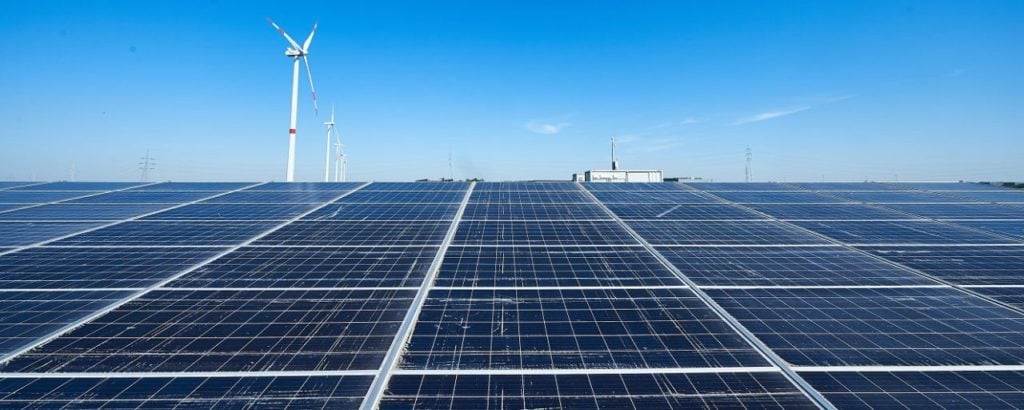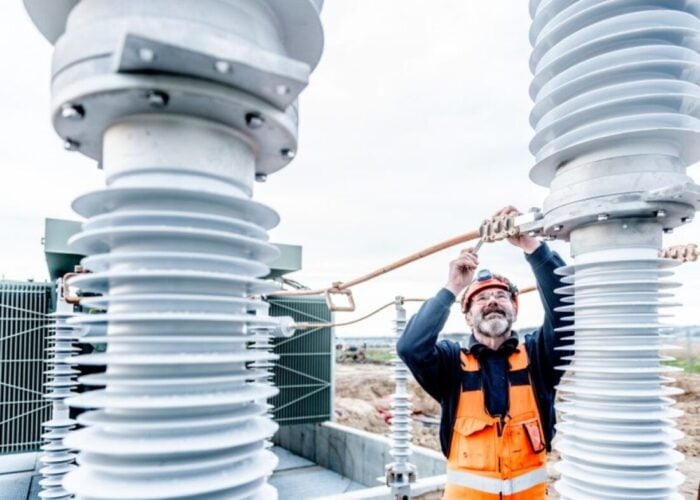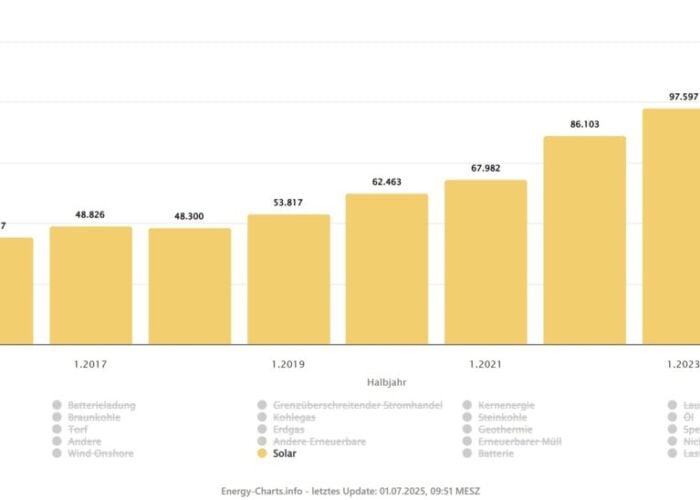
As was common last year in the global solar sector, 2023 proved to be a record-breaking year for Belgium’s solar industry. According to the Belgian energy association, Energie Commune, the country installed 1.8GW of new solar capacity last year, breaking the record for annual installations set in 2022 with 1.3GW of capacity and pushing the country’s total operating solar portfolio to 9.9GW.
While this figure hardly leads the European solar sector, record capacity growth is never a bad thing for the industry, and there is cause for optimism in the future for Belgium’s solar sector. According to trade body SolarPower Europe, Belgium installed around 500W of solar generation capacity per person in 2022, meeting the targets set out in its 2019 National Energy and Climate Plan (NECP). However, SolarPower Europe expects this per-capita capacity to jump to around 1,600W by the end of the decade.
Unlock unlimited access for 12 whole months of distinctive global analysis
Photovoltaics International is now included.
- Regular insight and analysis of the industry’s biggest developments
- In-depth interviews with the industry’s leading figures
- Unlimited digital access to the PV Tech Power journal catalogue
- Unlimited digital access to the Photovoltaics International journal catalogue
- Access to more than 1,000 technical papers
- Discounts on Solar Media’s portfolio of events, in-person and virtual
In comparison, Italy’s 2019 NECP set a target of around 800W of solar capacity per person, and the trade body expects it to reach just under 1,200W per person by 2030, suggesting that, on a per capita basis, Belgium’s solar sector will grow exponentially, compared to a country that has already posted impressive capacity addition figures in recent months.
This ambition has been realised by a combination of supportive legislation, with policies such as rooftop solar subsidies and tax reductions making solar more financially viable for Belgians. With this year’s general election offering the potential for leadership change in the country, it remains to be seen if Belgium can keep up its solar sector’s rapid recent growth.
Flanders leads the way
Belgium’s solar sector has expanded its operational capacity fairly consistently in recent years. According to Energie Commune, Belgium’s operating solar capacity has increased each year since 2020, with annual solar production increasing by 23% year-on-year between 2017 and 2018, 20.7% between 2019 and 2020, and a record-breaking 37.1% between 2022 and 2023.
In addition, the years in which total solar generation declined fell by much smaller figures. Since 2013, the largest year-on-year decline in solar generation was just 3.5% between 2015 and 2016.
Notably, 2015 marked the first year that Flanders – Belgium’s northern region that is home to more than half of the country’s population – exceeded the other regions of Wallonia and Brussels in annual capacity installations. Flanders added 69MW of new solar capacity, as shown in the graph below, compared to 37MW in Wallonia and just 4MW in Brussels, representing the nation’s capital city, and Flanders has led national capacity additions every year since.
Strikingly, 2016 and 2017 have solidified Flanders’ position atop Belgian’s three regions, nearly doubling Wallonia’s capacity additions in 2016 and almost tripling this figure in 2017. Part of this is due to legislation benefitting the Flanders solar sector in particular.
In November 2016, the permitting process for new solar projects was streamlined, with new project owners only needing approval from Flemish distributed grid operators Eandis and Infrax rather than approval by the Flemish Electricity and Gas Regulator (VREG).
While the VREG is still involved in granting green power certificates, the body is no longer needed in the day-to-day assessment and permitting associated with new solar power projects, which has accelerated these administrative processes. This is particularly relevant for the Flemish solar industry, which relies heavily on the distributed sector. In 2021, Belgian research institute EnergyVille reported that Belgium as a whole could install 99.6GW of rooftop solar capacity, with 67.6GW of this (or around two-thirds) set to be installed in Flanders.
Legislative changes and production records
In the wake of these changes in the Flemish solar sector, the government has implemented a number of new policies for the national solar industry. In February 2021, the government introduced a “social tariff” to cover some of the costs accrued by some of the poorest electricity and gas customers in Belgium; the tariff was extended until April 2022, and the International Energy Agency (IEA) reports that it cost the government a total of €600 million (US$651 million) to provide power to around 765,000 people.
While this level of direct government support for energy projects is not financially viable in the long term, it has helped to accelerate Belgium’s energy transition and was followed by other changes to national energy infrastructure. In 2022, the government reduced the VAT by 15 percentage points, from 21% to 6%, for new installations of PV panels, thermal panels, solar water heaters and heat pumps, as part of an initiative to decarbonise the country’s energy mix and help people meet their energy demands on a local scale.
This emphasis on rooftop solar, in particular, helped pave the way for a new initiative – this one deployed in Flanders, where this wave of policy reformation first began. Between 2022 and 2026, the Access to Sustainability for Tenants through Energy Effective Retrofit (ASTER) programme will see Flemish social housing companies invest around €155 million (US$168.2 million) into a new rooftop solar installation scheme, for which local residents will have to pay next to nothing.
Under the scheme, Belgian firm EnergyVision will install the modules, while ASTER will own them, and local people will be charged just €0.2 (US$0.22)/kWh of electricity consumed. The idea is not for local people’s energy usage to cover the installation costs, since EnergyVision expects to make its money back by selling excess power to the Belgian grid and using it at charging stations across the country. The removal of this financial burden from local communities has helped drive record levels of solar installation and generation in a country reliant on its distributed solar sector.
The graph above demonstrates how Belgian solar electricity generation has increased considerably in recent years, particularly in 2022 and 2023, when programmes such as ASTER were in place. Since the implementation of ASTER, the two mid-year quarters on either side of summer in both 2022 and 2023 saw Belgium generate over 2,000GWh of electricity.
While solar modules being more productive in summer is no surprise, the extent to which these months have been more productive, compared to just a decade earlier, is notable. The second quarter of 2022, the second quarter of 2023 and the third quarter of 2023 each produced more electricity from solar sources than the entirety of 2013; the second quarter of 2023, the most productive quarter on record, also produced more electricity than the entirety of 2014, 2016 and 2017.
Last year also saw the Belgian solar sector produce more than 100GWh of electricity in each month of the year for the first time.
Realising NECP targets
Belgium’s new policies come at a time when several European countries are assessing their renewable power sectors. Last year, a number of EU countries made adjustments to the National Energy and Climate Plans (NECPs), legislation that sets renewable power targets to 2030 for countries in the bloc.
Belgium targeted the commissioning of 8.9GW of solar capacity by the end of 2023, a target which the country met comfortably, but a number of countries made more ambitious plans, such as Germany’s targeting of 215GW and France’s plan to install 60GW. Germany’s updated NECP also places a much more ambitious target on solar installations than other power sources, with the 215GW of solar capacity target almost double that of the 145GW target for onshore and offshore wind.
Belgium, meanwhile, plans to make wind a much larger part of its energy mix in the coming years. According to its own NECP, and demonstrated in the graph below, Belgium expects its wind sector to generate more than double the electricity of its solar sector by the end of the decade. However, the government plans for solar to play a key role, exceeding the contribution of biomass to the energy mix by 2025 and generating an order of magnitude more electricity than hydropower by 2030.
Some of the funding for this expansion will come from EU sources. In November 2023, the European Commission committed €5 billion (US$5.42 billion) in grants and €264 million (US$286.4 million) in loans to fund a number of reforms and investments across Belgium, including €726 million (US$787.7 million) for the country’s REPowerEU scheme, part of the EU’s project to invest in greater energy efficiency, grid infrastructure and renewable power to reduce European reliance on Russian oil.
This external support for renewables projects comes at a time when internal support is beginning to wane, with the government planning to raise the price of those subject to the social tariff by 9.3%, making this figure closer to the commercial price of electricity. According to figures from Bloomberg New Energy Finance, EU countries invested around €314.3 million (US$341 million) into clean power in 2023, – more than the US – and this trend will likely continue into the future, posing questions for the Belgian government.
The make-up of this government is also unclear, with Belgium one of many countries holding a general election in 2024. Perhaps most ominously for the Belgian renewables sector is the success of Vlaams Belang, a far-right party that currently holds a considerable lead in the Flemish polls, drawing in 27.8% of the vote according to research from De Stemming this month. This is ahead of its closest rival, the Flemish nationalist N-VA, which has polled at just 18.9%, the first time since 2009 that support for this party has dropped below 20%.
While Flanders is currently a major contributor to the Belgian solar sector, Vlaams Belang’s success could place this under threat. In February, Vlaams Belang member of the European parliament Tom Vandendriessche called for the abolishment of the Green New Deal, suggesting that, at the very least, his party would not be as supportive of Flanders’ energy transition initiatives as recent leaders and casting doubts over the region’s future solar successes.







